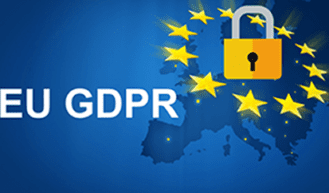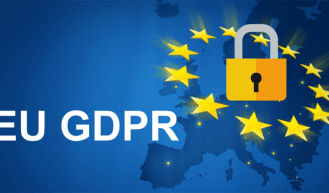Exclusive interview with Jeff Edwards Director for ERP Channel Strategy Microsoft
Dynamics 365
Marketing
Sales
Strategic
At Inspire 2017, we had an interview with Jeff Edwards. Jeff has been working for Microsoft since 2000 and is the director for ERP Channel Strategy and programs since 2007. We talked about the partner transformation process over the years. About the positive changes and the current challenges for both partners and Microsoft. And of course, we’ve also asked him for his best advice for you as a Dynamics partner going forward.

Jeff Edwards – Director ERP Channel Strategy Microsoft
Jeff, what are your observations around the partner transformation process in the SMB market?
“Well, let me start with the positives and cover the challenges afterwards. First of all, our best SMB partners have really embraced the Microsoft stack. They’re no longer single category ERP or CRM partners since they also implement solutions like Office 365 and CRM. And they offer Power BI, creating dashboards for their clients. The introduction of Dynamics 365 Business Edition will further increase that number of partners due to the attractive pricing and the smart packaging. The NAV partners who are not broadening their portfolio will be under risk – both for new business as for their existing customer bases. A year from now, if you’re an ERP partner not selling CRM – I don’t know what you’re doing.”
So, can you tell us more about the second positive?
“My second positive observation in the transformation is the degree of specialisation or verticalisation. Today’s prospective customers are not interested in conversations with partners that start with “so tell me, what does your business look like? What are your problems? What do you want to achieve?” And then build, support and update that bespoke solution. I don’t think people are willing to pay for that anymore. Besides, it’s often too complicated, takes too much time and the risks are too high. And all that comes with at a never-ending cost of keeping up with new releases. Companies like Forrester and Gartner confirm that the market wants as much out of the box as possible. And if you really want to do a customization, it should only because of a specific competitive advantage. Not because “we do things different.” The customization should have a specific customer benefit.
So that’s a big change for a partner! Basically, they have to move away from expensive sales and pre-sales processes and employees. The ones with long RFI’s, several product demonstrations and multiple Proof of Concepts to win a random new customer based on customization skills at a discounted prize. They also have to move away from one-off customizations and intensive consultancy projects towards repeatable vertical products, improved digital demand generation and product marketing to become successful in their selected markets. Also, the owner of this future-proof partner needs to have a different skill-set.
I’ve seen 12 years of nominations for our Dynamics partner awards. Over time, these nominations have become so much better and vertically precise. Our best partners have made huge progress in both business knowledge and business outcomes. A significant majority of the partners that do 80 percent of our business is fully verticalised. The top 20 percent of our total channel has made astounding progress. The next 30 percent is doing okay. We also see some differences in regions and solutions. In Europe 50 to 60 percent is fully verticalised. But the partners in the North of Europe are doing better than the ones in the South. And US partners are still less specialised than partners in Europe. CRM partners all over the world are still less specialised than their ERP colleagues. But they reform fast! When it comes to IP, you don’t have to build it all by yourself. AppSource will be very helpful in this process. And partners should definitely consider combining their own IP with IP from ISV’s.”
And finally, your third positive aspect. Which one is that?
“My third and last positive is the cloud acceptance all over the partner channel. I see a complete mental acceptance of the cloud today. However, reality is that in many countries or regions the infrastructure is not always sufficient. We see that the lead time of the transformation of our own business to cloud gets shorter all the time. To illustrate that: I think Microsoft announced CRM Online in 2009. It took us about 6 years before the cloud license revenue surpassed the onpremise license revenue. With Dynamics AX that transition time was two years. I expect that we will reach that turning point with NAV within 24 months.”
So that brings us to the challenges. Which are the most important ones that you see?
“Challenge number one is the switch from customized projects to standardised products. Partners aren’t doing a great job at that. The critical part probably is that it needs a different set of skills in terms of product management, release cycles, document and test. Plus the discipline that needs to come with that. Many partners have yet to take steps in this area.
My second one is the switch from a sales motion to a marketing motion. I think that we all have bought into the idea of this new buying behavior based on anonymous research. Yet, most partners are still poor at marketing. Many partners have been hiring marketing people recently, but rarely of the right level. Most of these new hires are young and have limited experience. Partners should focus on senior marketers and should give this person a seat in their Leadership teams. Just like they do with their sales manager. Our top partners already do this, like Power Objects, Socius and LS Retail. But that’s only like 10 percent of the channel. So that’s a disappointment. Partners that don’t improve their marketing will continue to be relatively ineffective in their sales at a way too high sales cost.
The third challenge is the expansion of the footprint of partner solutions. As I said before – our top partners have embraced the Microsoft stack. But for the total channel, the progress is at too slow a pace. And because of that, partners will miss deals. Especially if they plan to be successful with Dynamics 365. A solution like Office 365 won’t bring a partner a lot of money but in return it delivers account control. Do you want to be the IT strategy and solution provider for your customers? Then you simply need to offer the most important parts of the full stack. Either direct or as a white-labeled service via partners. I see sort of an end-point in this cloud SMB business where partners are deep solution providers in a micro-vertical, maniacally focused, offering the full Microsoft cloud stack via a kind of a portal. I don’t think that these partners necessarily need to be 100 million dollar companies with venture capitalists and IPO needs. They can be 10 to 30 million dollar companies and they will be very profitable.”
To expand their solution footprint, partners can consider a merger or acquisition. What is the status of these M&A activities in the channel?
“The M&A market is here now! At almost all of our top-partners, everyone talks to everybody. Either as a potential buyer or as a potential seller. However, buyers are not prepared to pay premiums. And often the sellers end up being disappointed about the price that is offered. And mostly that is because the owners focus more on the money they need for their retirement, rather than what the value for the buyer is.
I see two important trends. First is that partners understand the need for critical mass, both geographically and skill wise, to be a more complete provider for the full Dynamics 365 solution. Or even for the full Microsoft stack. Secondly, ERP partners buy CRM practices. Clearly this gives them an easy sale at a low cost to upsell CRM to their existing ERP customer base. In general I see that recurring revenue is the game changer. So I expect prices in M&A for traditional project businesses will decrease, where the market value of subscription based businesses will further increase.”
An alternative scenario for M&A is Partner to Partner co-operation. Why is that relatively unpopular?
“First of all, P2P co-operation needs trust. The investments you need to make in order to build that is substantial. As a result, there’s not much ROI on the short term, say the first 6 months. So the initial lift of co-operation is heavy and you need to maintain the discipline and be patient afterwards. Secondly, most partners don’t succeed in co-operation at scale. Maybe we should start thinking about making P2P co-operation into an official competency. In the near past, we’ve tried to stimulate co-operation in an analogue way. Maybe we should try this again in our digital world with AppSource and Partner Finder. Another good idea is to have CRM and ERP partners dating with each other at events like DIRECTIONS US and EMEA this fall.”
In your opinion – what is the ideal size of a successful Dynamics 365 partner today?
“So that’s an interesting question! A few years ago, the ideal size of a Dynamics partner business was calculated on 80 or more employees. That size allowed a partner for example to have a proper marketing department and someone responsible for methodology and quality. But that was based on traditional project business. With the partner channel switching now to pre-packaged, vertically focused products, this size question becomes relevant again! We definitely need to think about that, but these are my first thoughts. Marketing and a product management drive scale. Where sales, consulting and custom development do not. So the partners that have already made the switch can now grow their business relatively easy without hiring loads of extra people. On the other hand, there is the need to embrace a bigger part of the Microsoft stack that will lead to hiring additional skill sets.”
So what is the actual status of Partner requirements?
“We are reintroducing certification requirements for Dynamics 365 in the SMB market. This will come sometime in the next calendar year. We expect CSP to be the key channel for this product. You can see that we have changed the Dynamics 365 Enterprise edition requirements where now, certifications are required to sell the product in CSP. We do not want an unqualified channel to sell Dynamics 365, and we do not want unqualified partners to offer the subscription at a low cost just because they have invested nothing in marketing, sales or technical expertise. You can expect to see higher requirements for both the Silver and Gold Competency, and the right to sell in CSP. As always, we want a qualified lead to go to a partner that has the best chance of winning the deal, AND successfully implementing the software and ensuring customer success.
Finally, what are your Go Do’s for the Dynamics partner channel?
“Well, there are many things to do if you’re a Dynamics partners today! So, some kind of a structured approach will be very helpful. I would recommend our Dynamics SMB partners to focus on these four areas:
- Get ready for Dynamics 365 Business Edition and the cloud world in general
- Let go of your single category approach on either ERP or CRM and embrace the full Microsoft stack
- Focus on vertical markets. If you’re in a macro-vertical market today, consider going deeper to the niche or micro-vertical level
- Improve your marketing! Hire a product marketing manager. And think in terms of doubling your investment in time, money and dedication”














































































